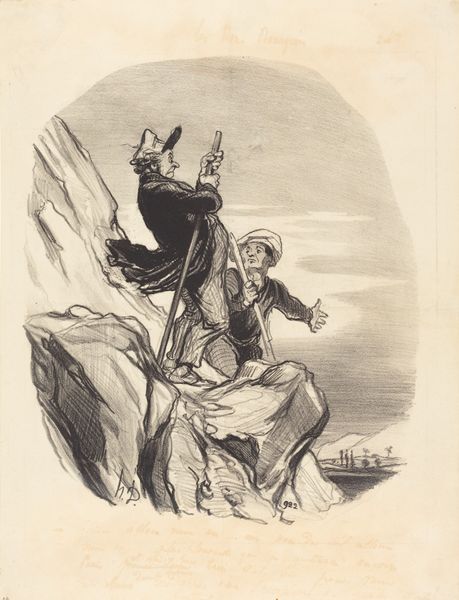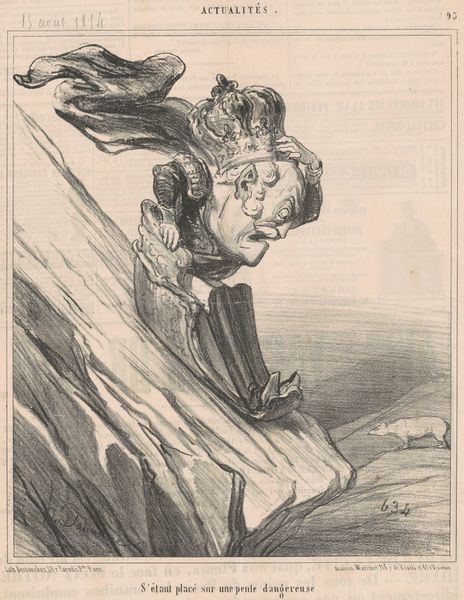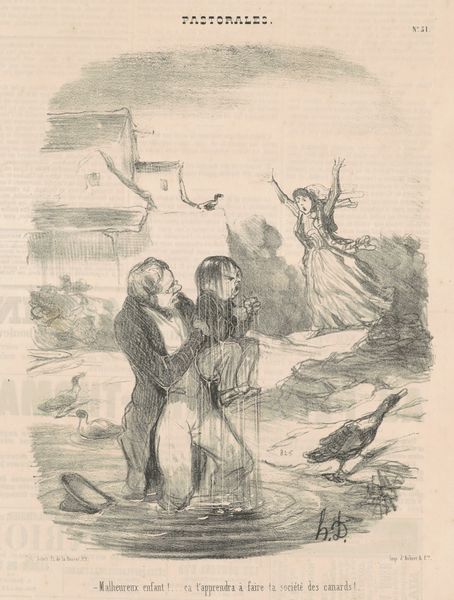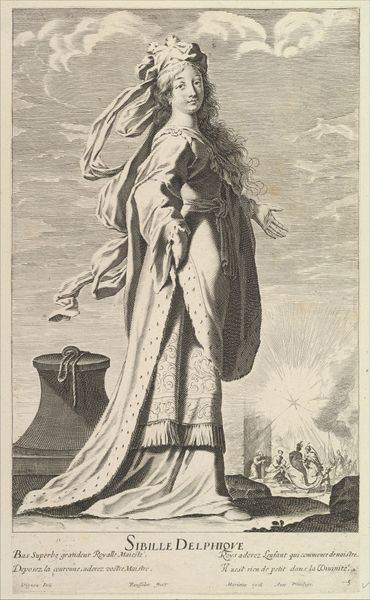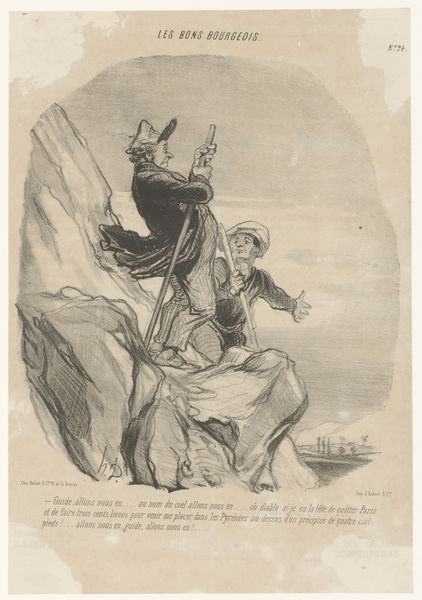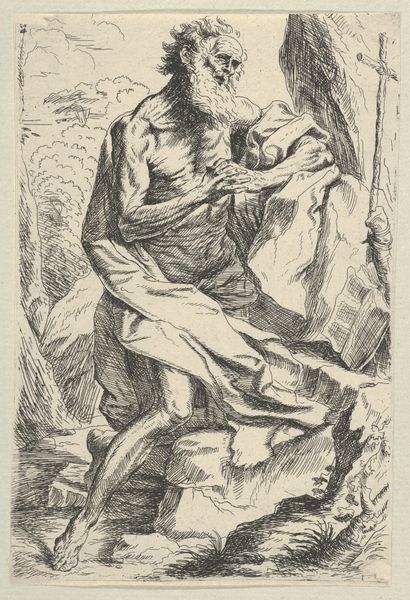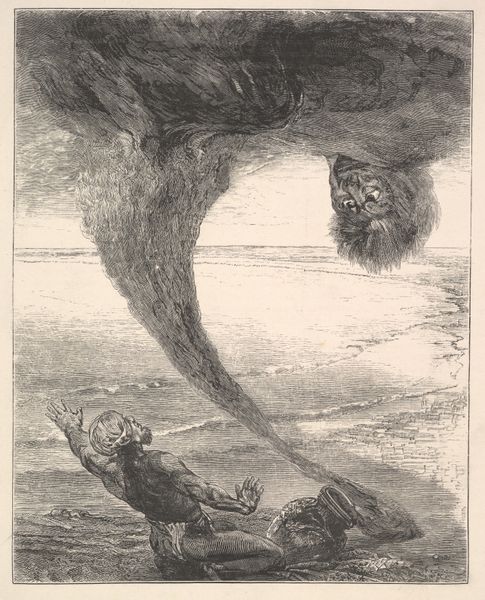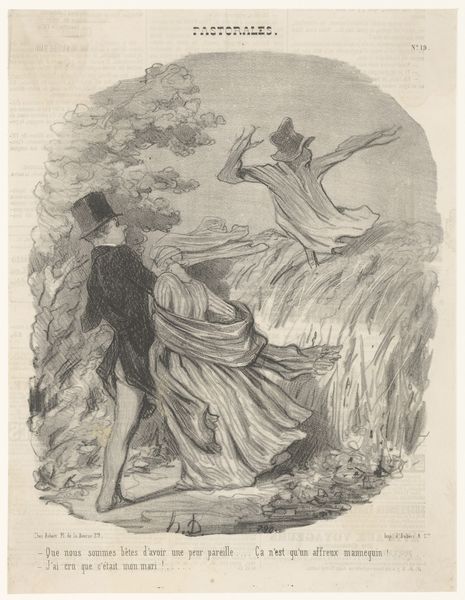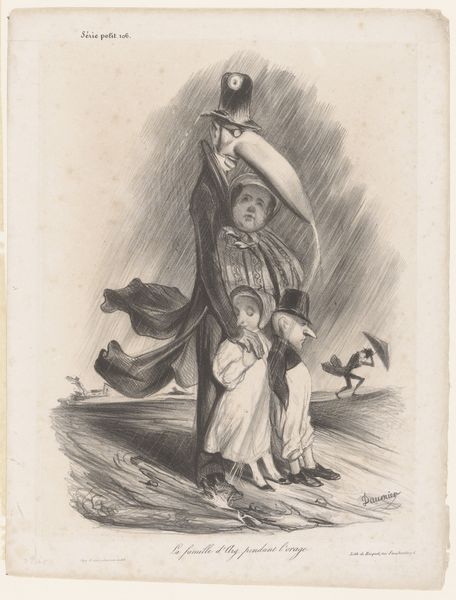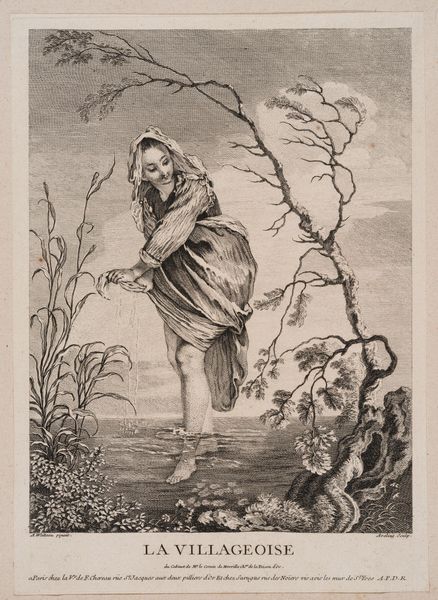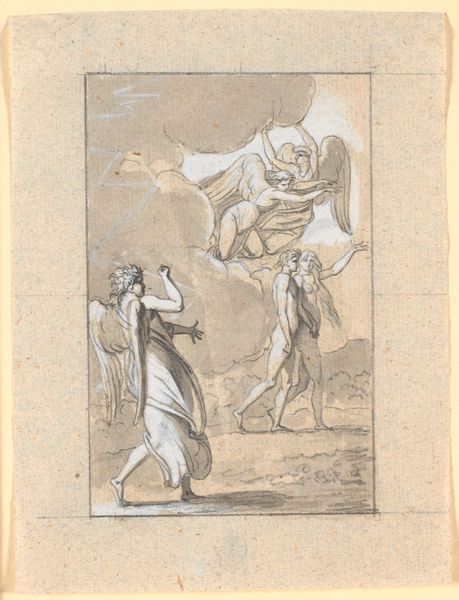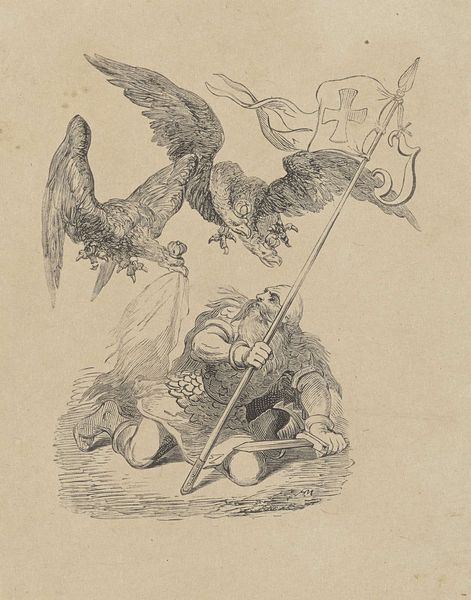
print, engraving
# print
#
landscape
#
figuration
#
romanticism
#
line
#
history-painting
#
nude
#
engraving
Dimensions: height 118 mm, width 93 mm
Copyright: Rijks Museum: Open Domain
Curator: Willem van Senus created this engraving titled “Death of Sappho.” While the exact date of its creation remains a bit broad, we place it somewhere between 1783 and 1851. Editor: Oh, she looks…melodramatic! The pose, the windswept drapery…it’s all very dramatic, very Romantic, very much on the verge of something big. Like plummeting off that cliff! Curator: Sappho's story, shrouded in myth and limited historical evidence, speaks to a rich, artistic life complicated by heartbreak and societal constraints. The act of leaping from the Leucadian cliff is depicted as a consequence of unrequited love for Phaon. It is symbolic of defiance but also highlights the limited agency afforded to women, especially queer women, in the time period. Editor: See, that’s interesting because the sea looks almost inviting in its detailed churning. It’s a classic love-story-gone-wrong tableau, sure, but there's something genuinely poetic in the imagined finality of it all. It looks romantic but also isolating. I'm kind of into it, morbidly. Curator: Van Senus situates the viewer to question Romanticism’s gaze on female subjectivity. How is female emotion often portrayed? Does this representation truly honor Sappho's memory, or does it exploit a sensationalized narrative? I’m not convinced of its respectful engagement with female artistic legacies and its tendency to sensationalize female experiences. Editor: True, it does sort of feel like a performance. Sappho's up there, hair blowing, lyre in hand, almost…posing for her big swan dive. Is she embracing freedom or surrendering to despair? It is hard to read. I suppose either way it's art imitating a pretty miserable life. Curator: Examining these depictions of Sappho allow us to interrogate prevailing societal attitudes about women, desire, and self-determination during this time. These depictions speak less about Sappho than they reveal the artist’s society. Editor: Okay, I can appreciate that this engraving makes me think about these things more deeply. Maybe that was the whole point! Curator: Perhaps. Considering our own potential biases helps us engage with and more critically understand these historical images. Editor: Well, I guess I will think about the power of choices…or the lack of them. It feels very now to look at this old print!
Comments
No comments
Be the first to comment and join the conversation on the ultimate creative platform.
